Video: Repotting Fiddle Leaf Fig with Garden Answer
Follow along as Laura from @Garden Answer takes care of her new fiddle leaf fig cuttings with the help of Espoma!
Featured:
Follow along as Laura from @Garden Answer takes care of her new fiddle leaf fig cuttings with the help of Espoma!
Featured:
1. Choose a basket
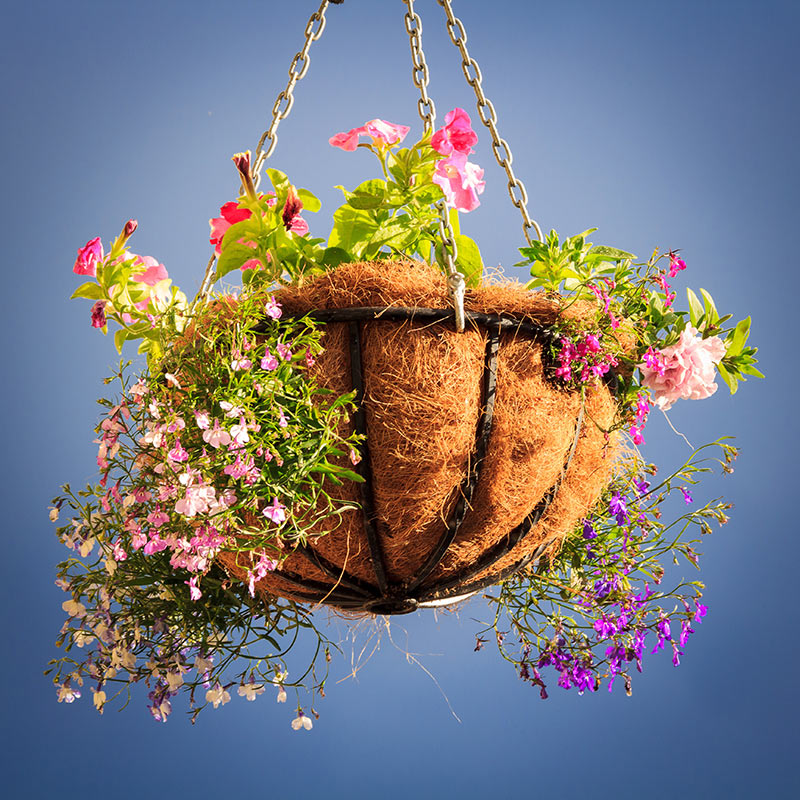
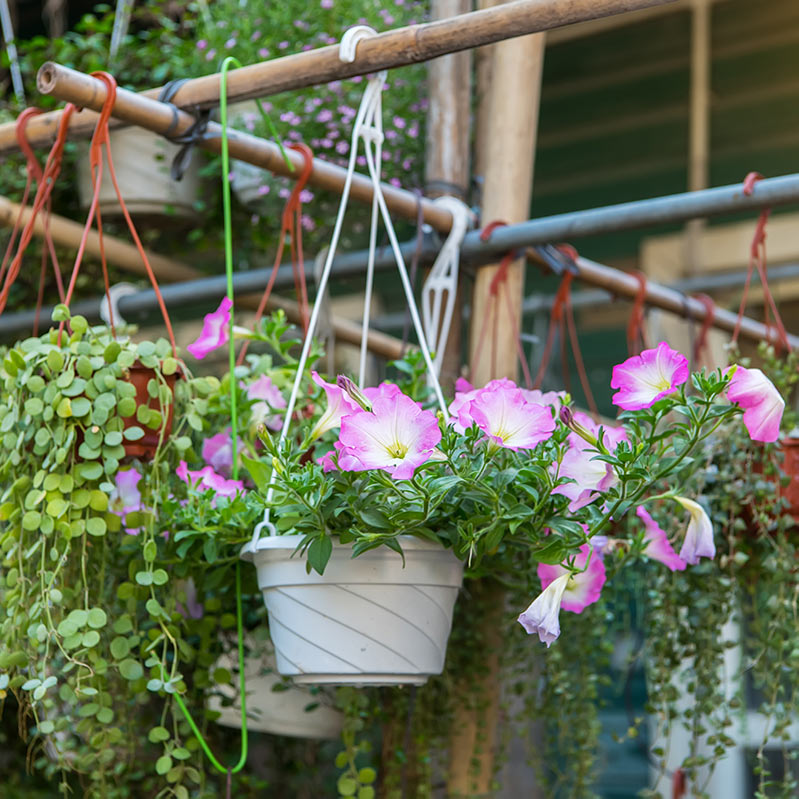
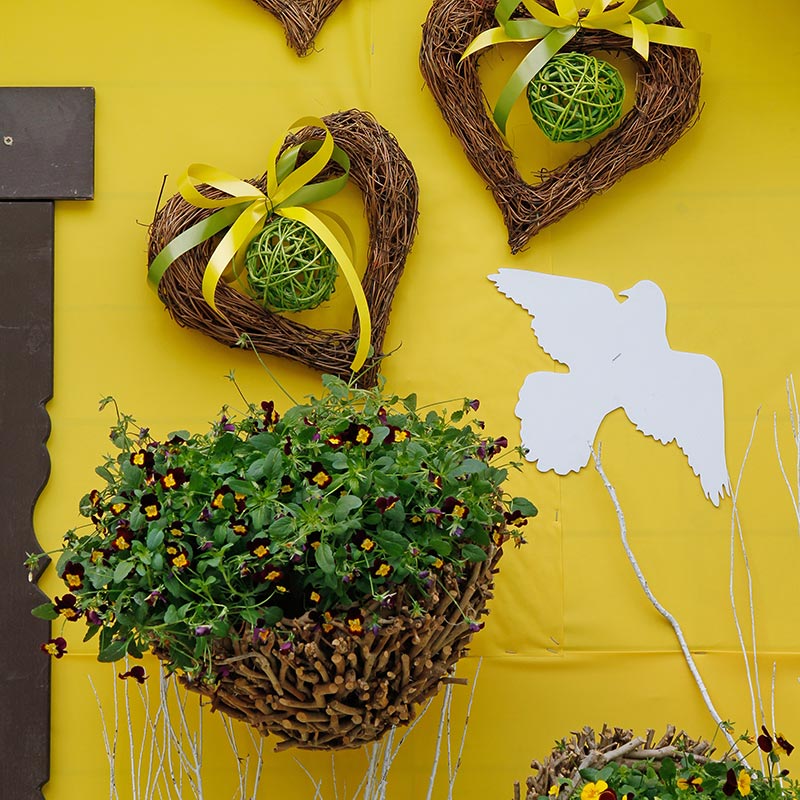
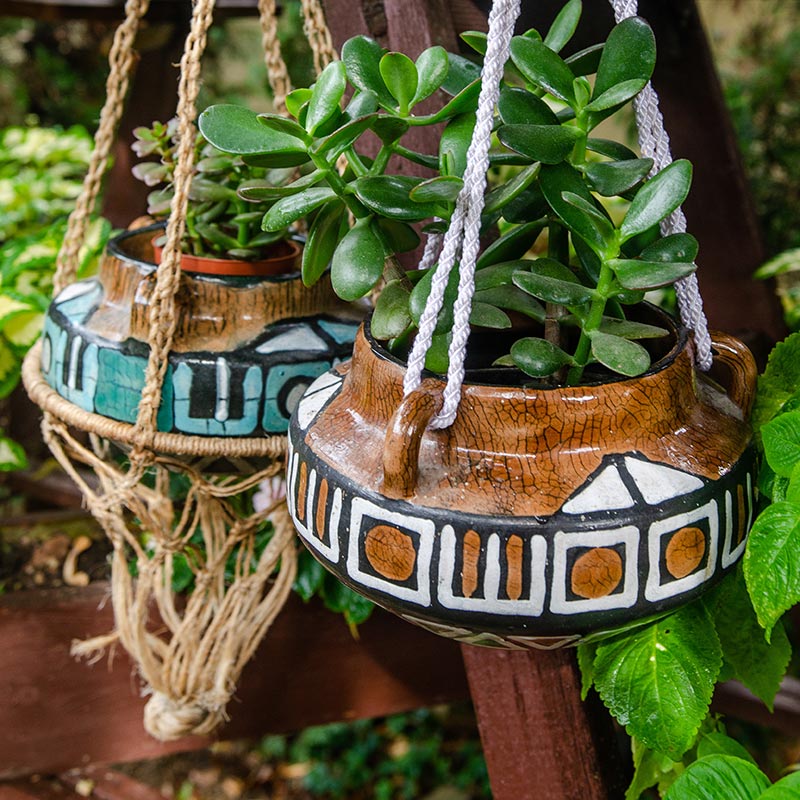
Good drainage is important, but if your basket doesn’t hold back any water, you’ll need to line it. There are lots of liners available. Sphagnum peat moss and cocoa moss are absorbent natural favorites that also hold in the soil. You can find them at your local garden center.
A high quality organic potting mix, like the one from Espoma, is an excellent choice. It contains mycorrhizae to promote root growth. Because nutrients can leach through the basket, it’s smart to add in about 1/4 cup of rich, organic plant food too, like Espoma Flower-tone®. Visit your local garden center for plants you can quickly transfer to your hanging basket.
You’ll need to evaluate your hanging location. Tall, upright plants aren’t usually the best choice, unless you like looking at the undersides of leaves and stems, or you’re planning on hanging the basket about waist high. Most folks prefer to hang plants a bit higher, so plants that “spill” over the sides of the container are a better choice for that purpose. Here are 5 of our favorite candidates for hanging baskets:
Since many hanging baskets are porous and drain very well, they also dry out quickly, especially in the outside air. Stick your finger in the soil about one inch down to check the moisture level. The soil down there should feel moist, like a wrung-out sponge. If the soil feels moist, your plants in that location don’t need watering today.
That wraps up our easy advice on hanging baskets. Now that you know the basics, there shouldn’t be anything to get hung up on. It’s high time you got started!
Let your imagination flow with possibilities, but keep a few things in mind. Think about sun, wind and shade requirements and where you’re going to place your plants. Consider flower color, texture & height – how they look alone and in combination. Ask yourself, is the plant compatible with other plants together in the same pot? It’s best to combine plants with similar needs, but sun-loving plants that grow above shade-loving will sometimes work out. The list of annuals ideal for containers is very long. In case you’re stuck, we’ve named 5 of our favorites to get you started.
Fuschia – The name is also the color. This plant with lovely little bell-shaped flowers likes partial shade.
Gazania – Or African daisy. Daisy-shaped flowers come in a vivid color range featuring red, orange, yellow, white and pink and close at night. This annual wants full sun.
Begonias – From full sun to dense shade; flowers from spring to first frost in beautiful white, red or pink!
Portulaca – Can you say “hot and dry”? Those are the perfect full-sun conditions for these small, but fast growing annuals with 1″ flowers in white, red, orange, pink and yellow.
Verbena – These plants reach a size of six to ten inches. But don’t over-pamper them with excesses of anything. Full to partial sun. Verbena blooms in clusters of small flowers in shades of blue, mauve, white, pink or purple.
If you think annuals are only for flowerbeds, you’re missing out. Wherever you grow annuals, they will reward you with beautiful colors, bright foliage, and soothing fragrances all season long. But when you plant them in containers, they provide even more benefits.
There’s a lot of latitude when choosing a container for your annuals, but here are a few important things to think about:
Follow these friendly tips – and grow with confidence.
We hope we’ve inspired you to fill your surroundings – and containers – with beautiful annuals. Choosing to grow annuals in containers is the easy part. Deciding on the combination you like best – now that’s the real challenge!
It’s a popular tradition to buy Mom Roses for Mother’s Day. No other flower can communicate such a range of meaning and emotion. This year, why not consider giving her some roses that will last for years rather than a few days.
Floribunda – its Cowabunga! A bushy shrub with lots of big, showy blossoms on every stem (instead of just one). Something to really get excited about!
Hybrid Tea, anyone? These are the long, tall beauties you see at the florist.
Shrub & Landscape – a dynamic duo. Hardy, low-maintenance plant that blooms throughout a long season available in shapes and sizes to fit any landscape.
Climbers – heighten the effect. Dress up the scene with cascades of flowers – train climbers to adorn an entrance, wall or fence –anything that will offer support.
Miniature – no shortage of lovely with these little beauties. Large roses are beautiful, but there is something even more captivating about seeing roses this small. Hardy little plants that do well in containers.
Tree Roses – or four? You just can’t get enough of them. These grafted wonders connect strong roots to a long stem and the top of a rosebush to create an unusual but elegant look. Extra care is required for these roses.
We often think of planting bulbs as a Fall activity for Spring color, but there are many Summer Bulbs that can be planted now that bring bright color, cheer, and sweet fragrances into our lives. Okay, some are actually corms or tubers, but they always get lumped in with the true bulbs. Our favorite Summer Bulb varieties include:
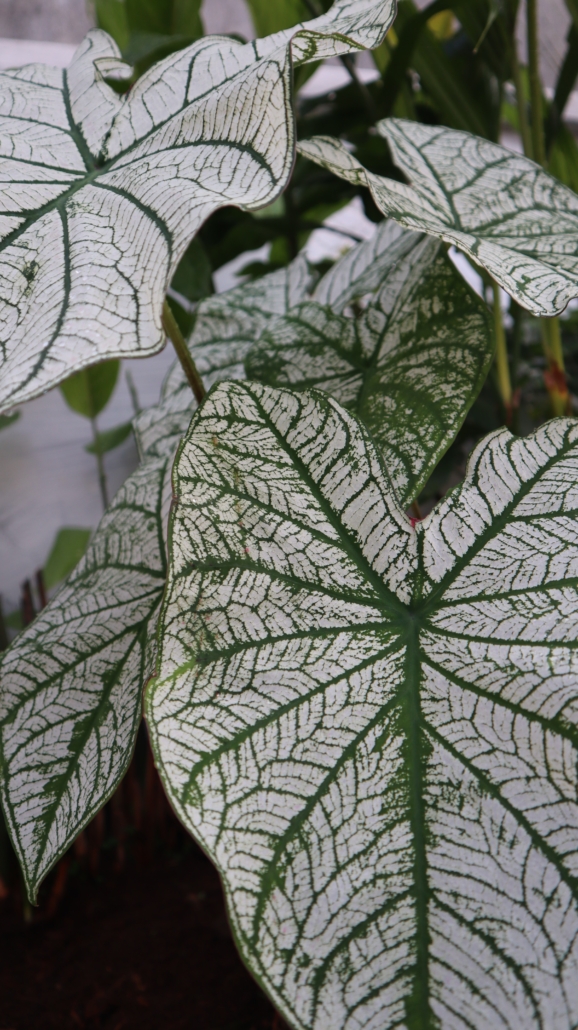
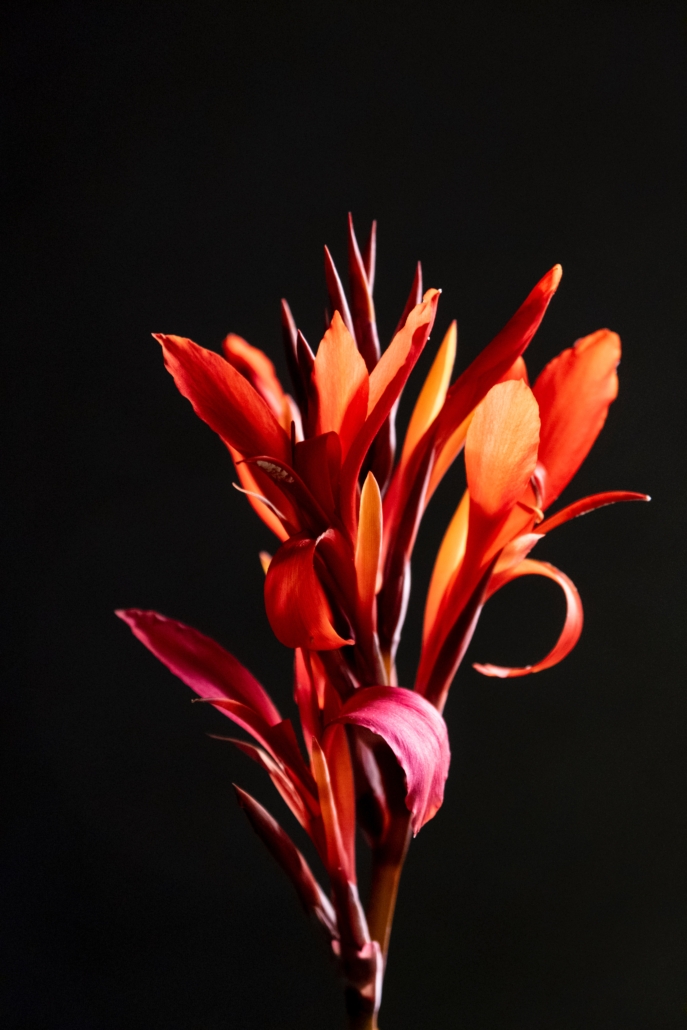
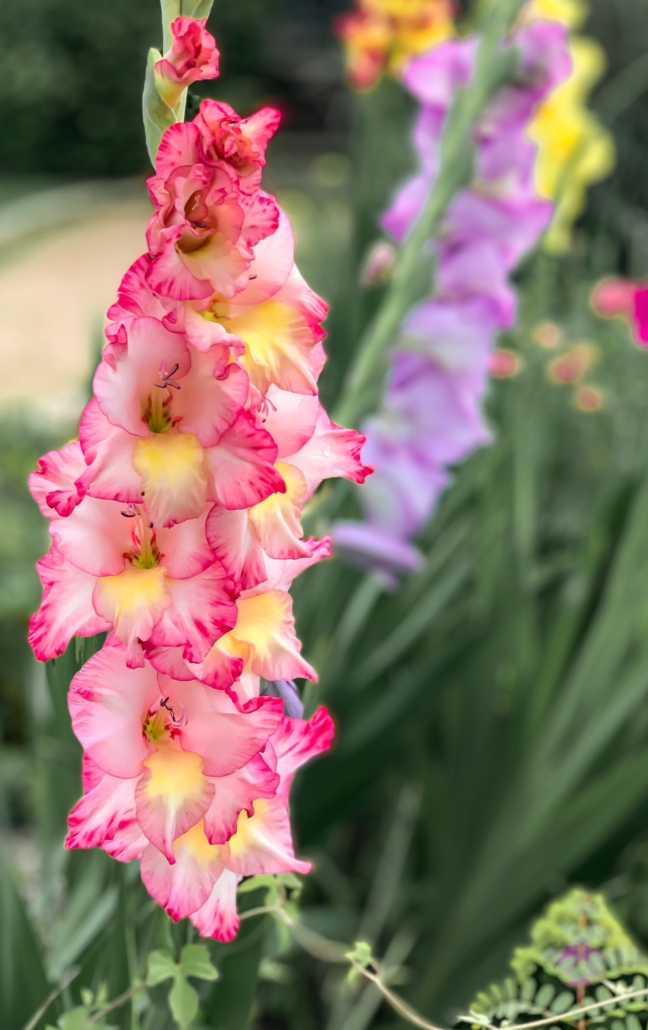
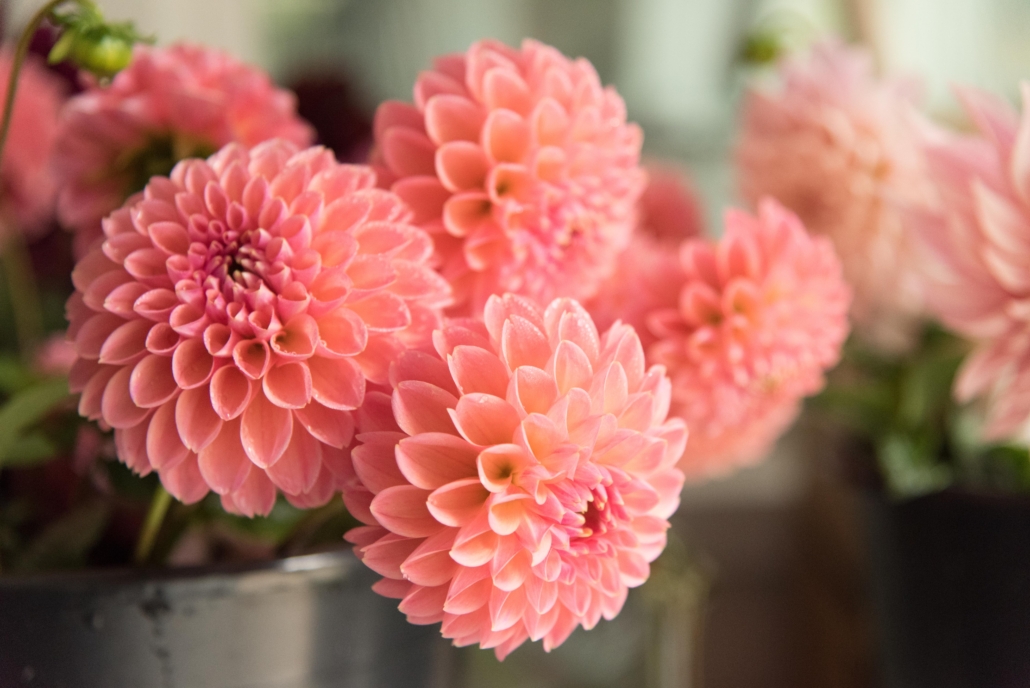
*****
Spring for something different in your garden this year: Summer Bulbs! They’re bright, colorful, and the hottest thing to come along – besides summer.
Featured Products:
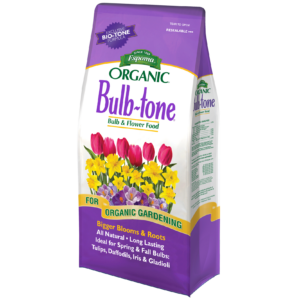
You might think of the growing season as the time between frosts. But vegetable gardening doesn’t have to wait until warm weather to be in the forecast. Cool Season vegetables are heartier varieties that tolerate, and even thrive, in the cold soil of early Spring. For many gardeners, mid-March marks the best time of the gardening season. What’s really important is soil temperature–it must be in the 40’s for cool season vegetable seeds to germinate. Simply go by the general rule that soil is warm enough when you can easily turn it with a shovel. Here are some come cool season vegetable suggestions worth trying:
If you can’t wait to get your hands dirty in the garden, there’s no reason to get left out in the cold. Give cool season crops a try!
There is no one, universal mulch for everything. There are pros and cons to every mulching material. Whatever the material, mulch needs to stay put to be effective, but should also be easy to remove and apply.
Natural mulches are very common and are composed of plant matter. Examples include straw, shredded leaves, bark, pine needles or wood chips. These mulches decompose over time which helps improve the soil but it also means they must be replaced once or twice a year. Colored mulches are made by adding a dye to a natural mulch. They typically come in colors such as brown, black or red. Whether you’re using rich black to make your perennial garden pop or soft red to accent your home, colored mulch gives you more flexibility and creativity in your garden.
Not all plants are the same, but these basic directions provide good rule-of-thumb guidelines for applying mulch.
The quest for greener grass on your side of the fence could be harming the environment. By EPA estimates, Americans apply 90 million pounds of pesticides to their lawn and gardens every year, creating a potential hazard for adults, children and pets. In addition, synthetic fertilizers can burn your lawn and leach away into nearby waterways. And odds are your lawn products contain both of these ingredients.
Organic lawn care is a great way to a safe and healthy lawn. A healthy lawn is the best defense against weeds, insects and diseases. For a healthy lawn, you need healthy soil, alive with earthworms and loaded with beneficial microbes. Healthy soils let grass roots grow deep, making them more resistant to drought and stress. To have a safe & healthy soil, you need to avoid using pesticides and synthetic fertilizers and follow the tips at right.
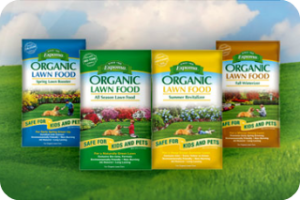 1. Go on an organic diet. Choose an organic lawn program like the new one from Espoma. Benefits include:
1. Go on an organic diet. Choose an organic lawn program like the new one from Espoma. Benefits include:
2. Water When the Rooster Crows
4. Sweeten the Soil (if necessary)
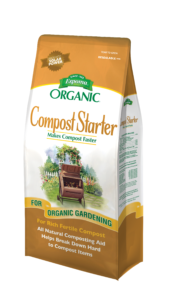 What is Composting?
What is Composting?
Composting is the biological process in which microorganisms convert organic material such as manure, leaves, grass, and food wastes into a soil-like material called compost. Composting is the same process that decays leaves and other organic remains in nature except that composting controls the conditions so that materials decompose faster.
Optimal Conditions for Composting
Composting is quickest when conditions that encourage the growth of microorganisms are established and maintained. The most important conditions include:
Oxygen and Aeration
Composting consumes large amounts of oxygen. If oxygen is limited, the composting process slows down. Offensive odors are usually a good indication of a need for greater aeration.
Ample Nutrients
Carbon, nitrogen, phosphorous, and potassium are the primary nutrient requirements for microorganisms and plants. Microorganisms use carbon for both energy and growth while nitrogen is essential for protein and reproduction. In general, organisms need about twenty-five times more carbon than nitrogen. Raw materials blended to provide a C/N ratio of 25:1 to 30:1 are ideal for active composting, although C/N ratios from 20:1 to 40:1 will usually give good composting results.
Moisture
Moisture is required to support the metabolic processes of microbes. Water provides the medium for chemical reactions, transports nutrients, and allows microorganisms to move about. The moisture content of composting materials should be maintained with a range of 40% to 65%.
Microorganisms
Successful composting relies on the successful growth and maintenance of microbial populations. Generally, sufficient organisms can be found with most organic materials. However, adverse conditions such as low oxygen, poor nutrients, inadequate moisture, or improper pH can slow, stop or even kill the growth of these vital decomposers. Espoma Compost Starter provides the insurance that their growth will proceed optimally by enriching the pile with thermophilic, mesophilic, and special varieties of microbes that are specifically cultured for rapid and complete composting.
Taking Care of the Compost Pile
To ensure that adequate amounts of oxygen are maintained in the pile, turning is an ideal technique. The main objectives of turning are to shift materials from the outer parts of the pile closed to the center for better decomposition and to incorporate oxygen. The pile should be turned more frequently during the warmer periods of the year. Piles should be turned immediately if ammonia or other offensive odors are detected.
The composting pile should also be kept moist for proper decomposition. Inadequate moisture reduces microbial activity, while excessive water may cause anaerobic conditions. A thin outer layer of dry material is unavoidable. During dry weather it may be necessary to add more water. The moisture content of the interior of the pile should be observed while turning.
Common Problems & Solutions
| Problems | Probable Reason(s) | Solution |
|---|---|---|
| Compost does not heat up | Too dry or wet, C:N ratio too high, pile too small, pH low, not enough aeration | Add water to dry material, add Compost Starter, and/or low C:N materials, build pile larger, add Compost Starter, turn more frequently |
| Compost cooling | Low moisture or aeration, composting almost done | Add moisture and turn more frequently, add Compost Starter, if composting almost done – do nothing |
| Compost overheating | Pile too large, spontaneous combustion beginning | Add moisture, turn more frequently |
| Ammonia odor | High pH, high nitrogen | Add high C:N materials |
| Rotten eggs odor | Too wet, not enough aeration | Add dry materials, turn more frequently |
| Insects | Breeding in pile, too wet | Turn more frequently, reduce moisture, add Compost Starter |
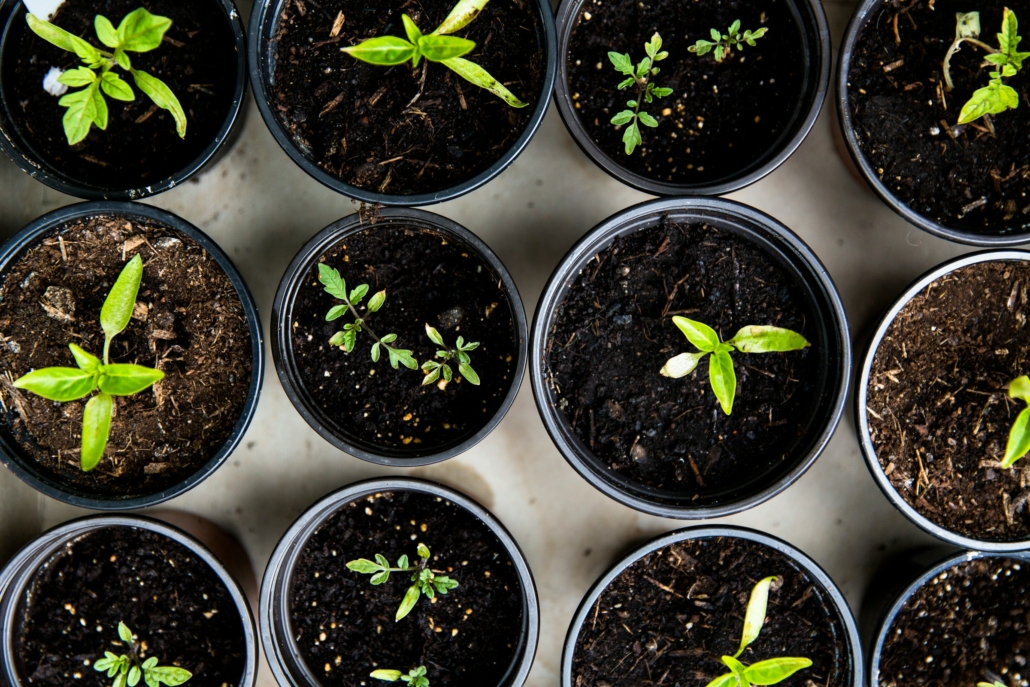
Start seeds 4 to 6 weeks before you plant in the garden. Cool-season crops like broccoli or lettuce can go into the garden before the last frost. Warm-season crops like tomatoes & peppers should not be planted until all danger of frost is past. Almost anyone can succeed by following the guidelines below.
1. Fresh is best. Always start with fresh, high-quality seeds.
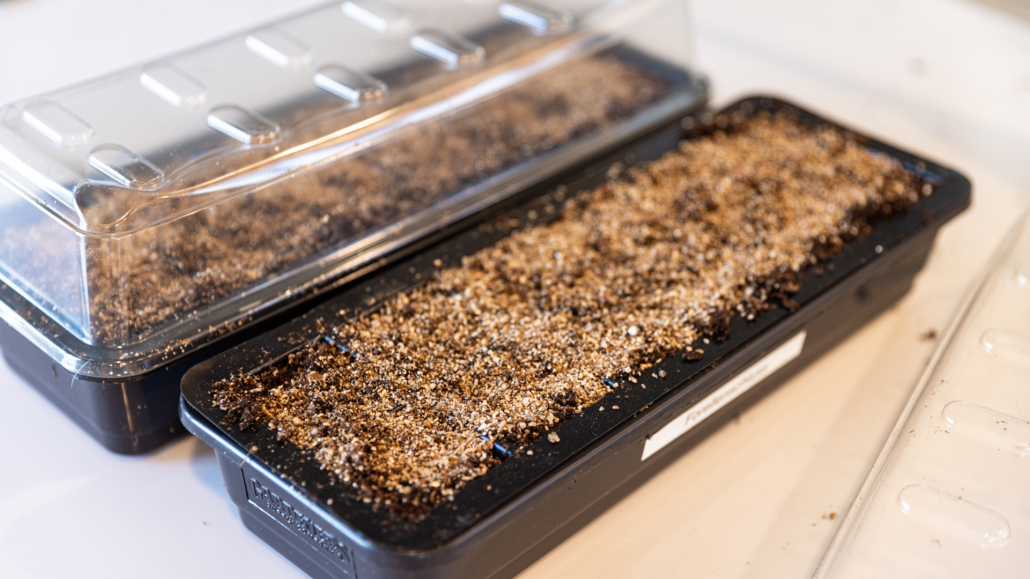
2. Plastic is fantastic. You can purchase plastic trays and kits designed specifically for starting seeds. They’re clean and free of pathogens, keep the soil uniformly moist and allow for adequate drainage.
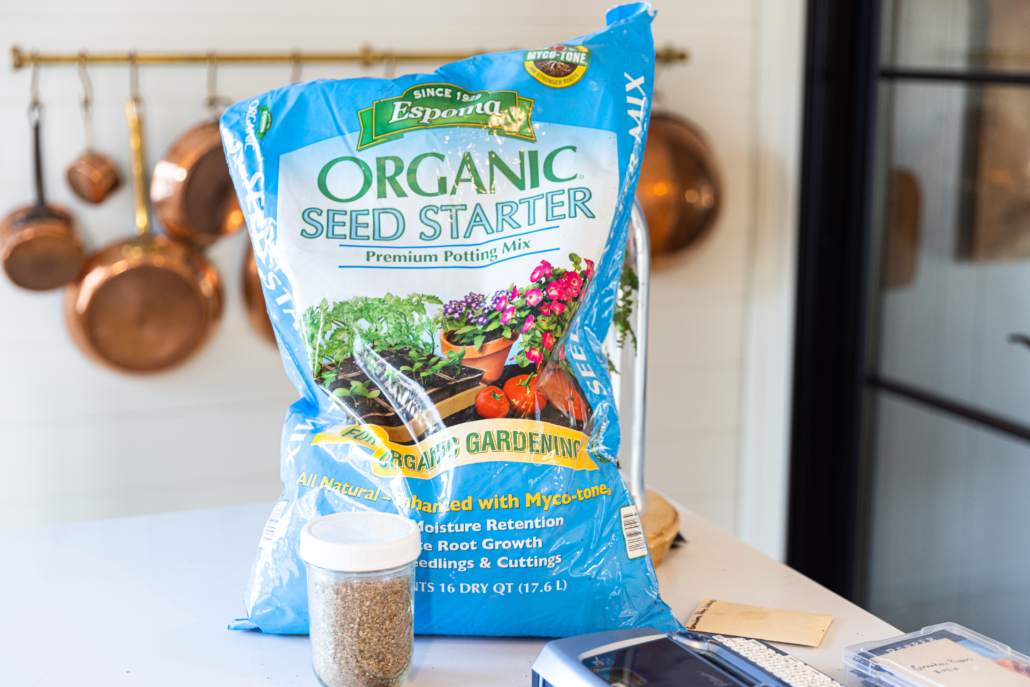
3. Use a magical mix. Good mixes, like Espoma Organic Seed Starter, ensure that you’ve got a lightweight, clean and sterile medium without insects, fungus or weeds. Moisten the mix with a little water (damp, not soggy).
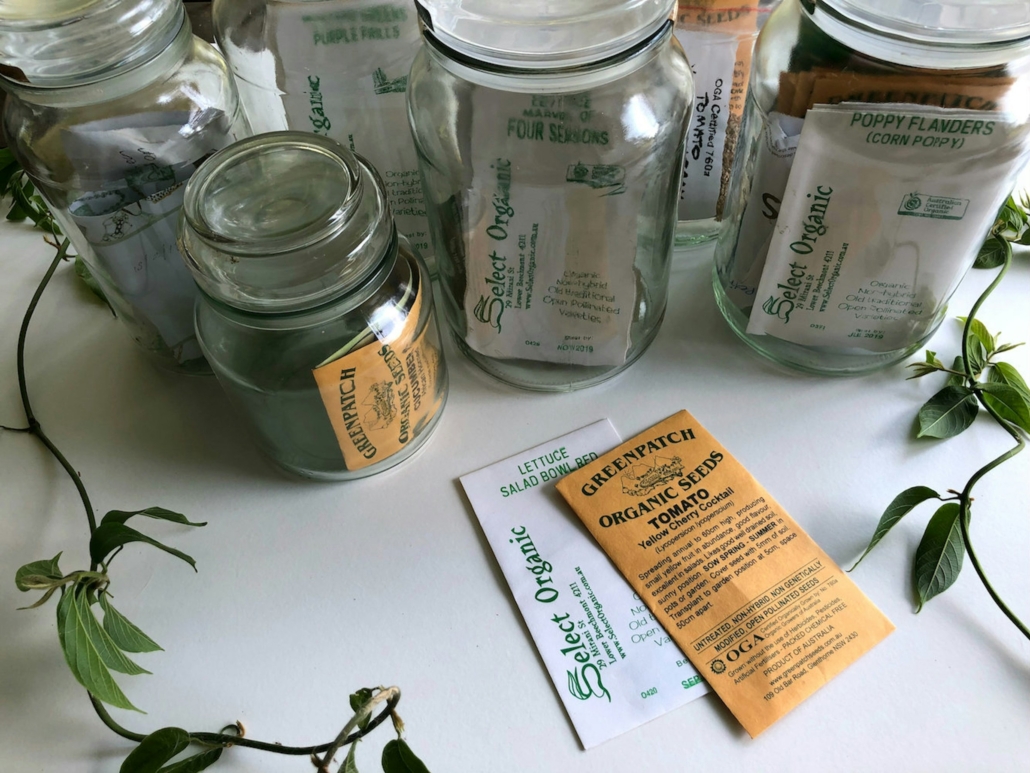
4. Packets know best. Plant your seeds according to the depth and spacing directions on the seed packet. Cover the seeds with soil mix and tamp down to ensure that the seeds are held in firm contact with the soil.
5. Bottom’s up. It can be challenging to apply the right amount of water to freshly sown seeds by pouring, sprinkling or spraying. It’s better to water from the bottom. That means placing the planting container into a larger pan of shallow water for a short time (few seconds to a couple of minutes).
6. Take cover. Loosely cover with plastic wrap after watering to retain moisture. Check the moisture daily and watch for germination. As soon as the seeds germinate, remove the plastic wrap.
7. Stay warm. For most seeds, sprouting requires a minimum temperature of about 65° to 75°F. If the ambient temperature is less than that, you can position a space heater nearby. Just make sure that the soil doesn’t dry out.
8. Let the sun shine in. Most seeds need about 12 to 16 hours of sunlight each day. Place your seed containers in a sunny location such as a window with southern exposure. Once the seeds sprout, turn the container a little each day. This will prevent seedlings from overreaching in one direction toward the light.
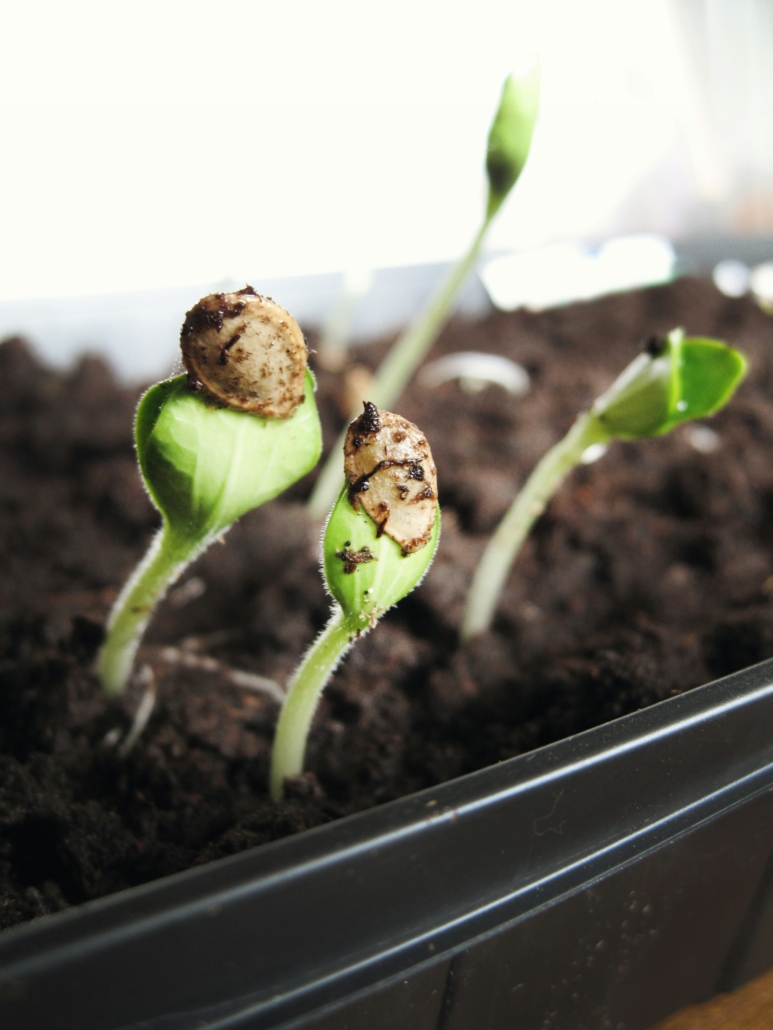
9. The need to feed. Don’t use fertilizer on seedlings until they have sprouted! In the very early growth stage, the seed provides its own nourishment, but once leaves develop, it’s time for a little liquid fertilizer like Espoma Organic Grow!
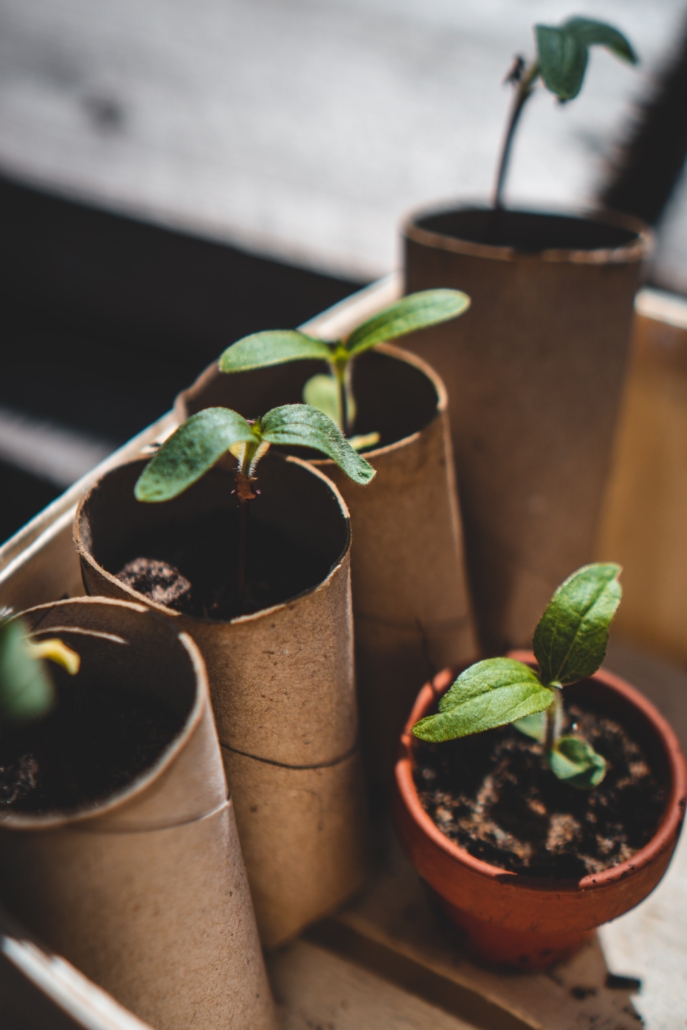
10. Harden them off. Your sheltered seedlings need to get ready for the outdoors. For 7 to 10 days, put your plants outside for a few hours each day, increasing their exposure to sunlight & wind. Cut back on watering a bit, too. Your plants will become heartier and better prepared for transplanting.
11. No stripping. Slowly, and gently remove plants from their containers without stripping the roots naked or tearing them. Plant them in the ground and mix in a really good starter plant food like Espoma Organic Bio-tone Starter Plus in with the soil.
Now that the plants are safely in the ground, there’s just one last step. Give yourself a big pat on the back for a job well done—and look forward to enjoying the fruits (or flowers and veggies) of your labor later in the season.
*****
Download our complete guide here: Download PDF
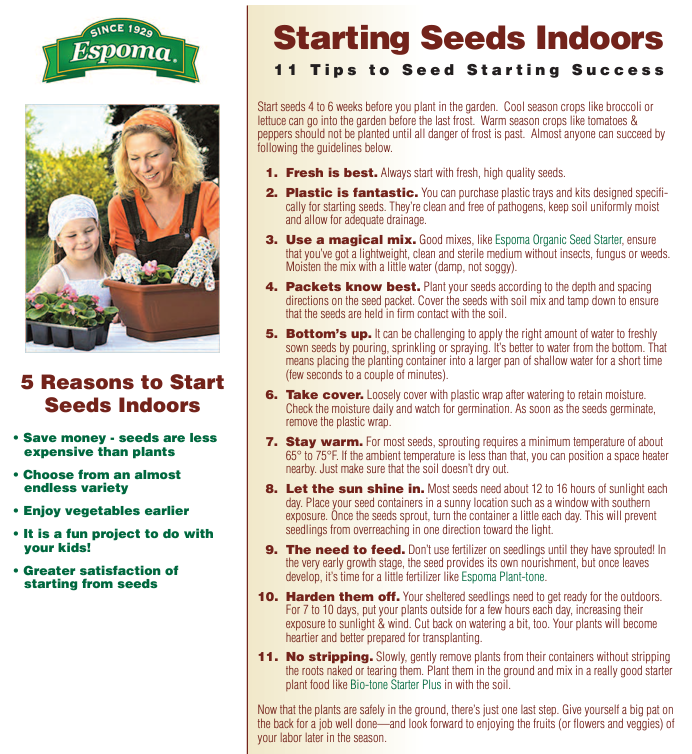
Featured Products:
